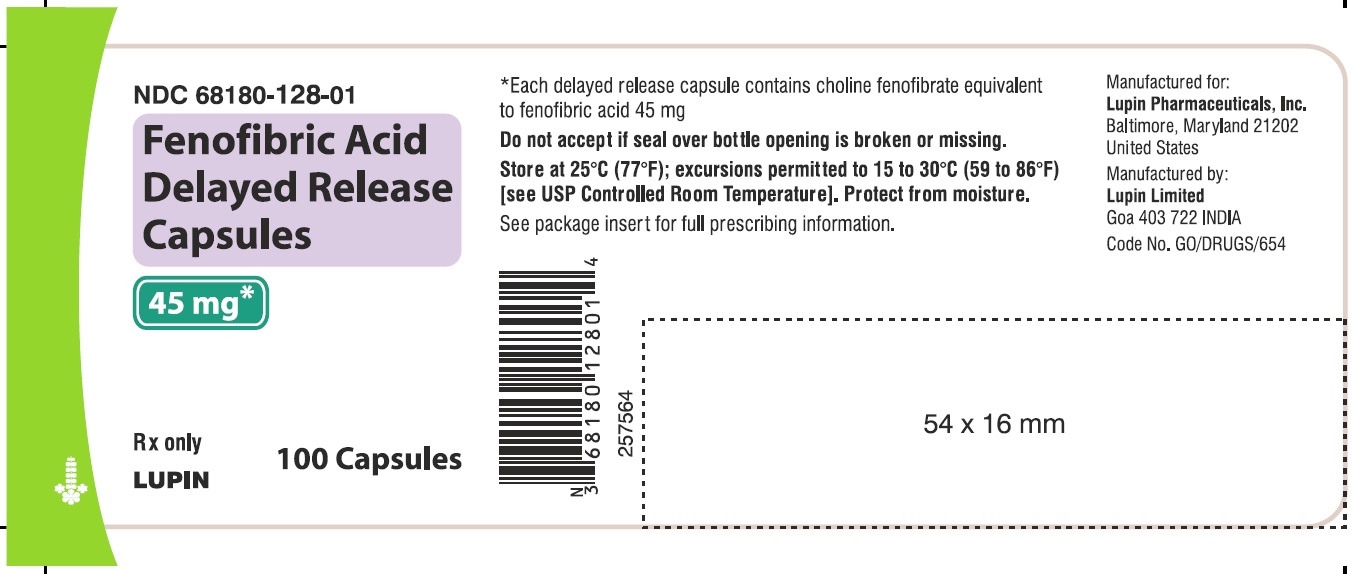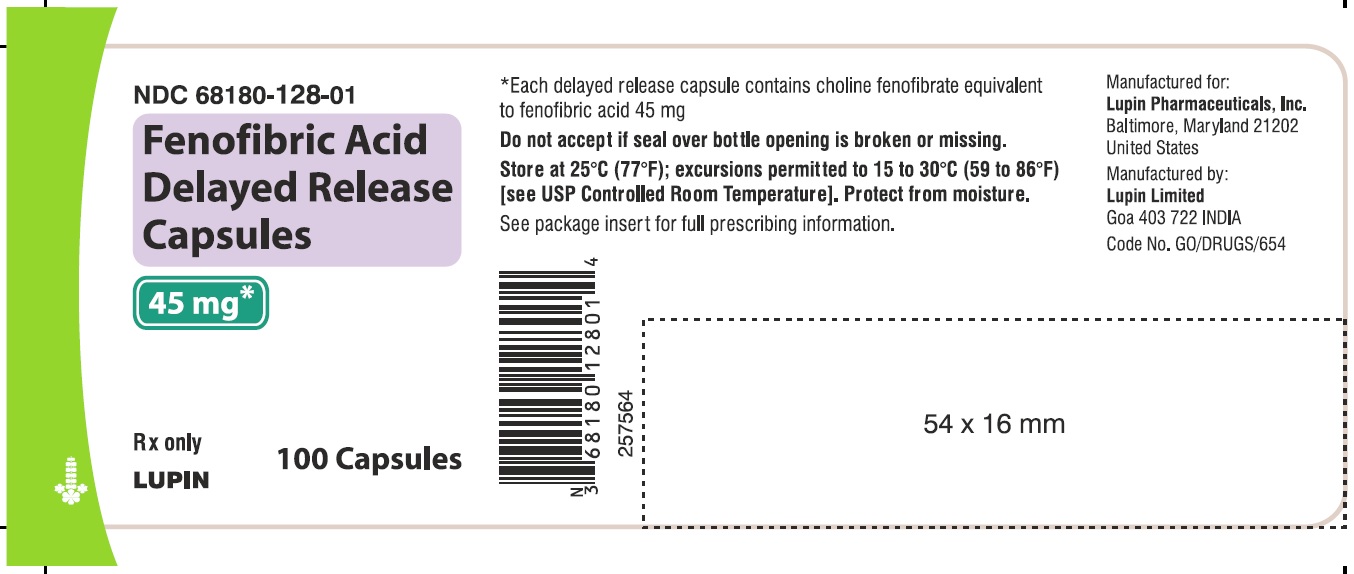5.1 Mortality and Coronary Heart Disease Morbidity
-
The effect of fenofibric acid on coronary heart disease morbidity and mortality and non-cardiovascular mortality has not been established ...
5.1 Mortality and Coronary Heart Disease Morbidity
The effect of fenofibric acid on coronary heart disease morbidity and mortality and non-cardiovascular mortality has not been established. Because of similarities between fenofibric acid and fenofibrate, clofibrate, and gemfibrozil, the findings in the following large randomized, placebo-controlled clinical studies with these fibrate drugs may also apply to fenofibric acid.
The Action to Control Cardiovascular Risk in Diabetes Lipid (ACCORD Lipid) trial was a randomized placebo-controlled study of 5518 patients with type 2 diabetes mellitus on background statin therapy treated with fenofibrate. The mean duration of follow-up was 4.7 years. Fenofibrate plus statin combination therapy showed a non-significant 8% relative risk reduction in the primary outcome of major adverse cardiovascular events (MACE), a composite of non-fatal myocardial infarction, non-fatal stroke, and cardiovascular disease death (hazard ratio [HR] 0.92, 95% CI 0.79 to 1.08) (p=0.32) as compared to statin monotherapy. In a gender subgroup analysis, the hazard ratio for MACE in men receiving combination therapy versus statin monotherapy was 0.82 (95% CI 0.69 to 0.99), and the hazard ratio for MACE in women receiving combination therapy versus statin monotherapy was 1.38 (95% CI 0.98 to 1.94) (interaction p=0.01). The clinical significance of this subgroup finding is unclear.
The Fenofibrate Intervention and Event Lowering in Diabetes (FIELD) study was a 5-year randomized, placebo-controlled study of 9795 patients with type 2 diabetes mellitus treated with fenofibrate. Fenofibrate demonstrated a non-significant 11 % relative reduction in the primary outcome of coronary heart disease events (hazard ratio [HR] 0.89, 95% CI 0.75 to 1.05, p = 0.16) and a significant 11% reduction in the secondary outcome of total cardiovascular disease events (HR 0.89 [0.80 to 0.99], p = 0.04). There was a non-significant 11 % (HR 1.11 [0.95, 1.29], p = 0.18) and 19% (HR 1.19 [0.90, 1.57], p = 0.22) increase in total and coronary heart disease mortality, respectively, with fenofibrate as compared to placebo.
In the Coronary Drug Project, a large study of post-myocardial infarction patients treated for 5 years with clofibrate, there was no difference in mortality seen between the clofibrate group and the placebo group. There was, however, a difference in the rate of cholelithiasis and cholecystitis requiring surgery between the two groups (3.0% vs. 1.8%).
In a study conducted by the World Health Organization (WHO), 5000 subjects without known coronary artery disease were treated with placebo or clofibrate for 5 years and followed for an additional one year. There was a statistically significant, higher age-adjusted all-cause mortality in the clofibrate group compared with the placebo group (5.70% vs. 3.96%, p = < 0.01). Excess mortality was due to a 33% increase in non-cardiovascular causes, including malignancy, post-cholecystectomy complications, and pancreatitis. This appeared to confirm the higher risk of gallbladder disease seen in clofibrate-treated patients studied in the Coronary Drug Project.
The Helsinki Heart Study was a large (N = 4081) study of middle-aged men without a history of coronary artery disease. Subjects received either placebo or gemfibrozil for 5 years, with a 3.5 year open extension afterward. Total mortality was numerically higher in the gemfibrozil randomization group but did not achieve statistical significance (p = 0.19, 95% confidence interval for relative risk G:P = 0.91 to 1.64). Although cancer deaths trended higher in the gemfibrozil group (p = 0.11), cancers (excluding basal cell carcinoma) were diagnosed with equal frequency in both study groups. Due to the limited size of the study, the relative risk of death from any cause was not shown to be different than that seen in the 9 year follow-up data from WHO study (RR = 1.29). A secondary prevention component of the Helsinki Heart Study enrolled middle-aged men excluded from the primary prevention study because of known or suspected coronary heart disease. Subjects received gemfibrozil or placebo for 5 years. Although cardiac deaths trended higher in the gemfibrozil group, this was not statistically significant (hazard ratio 2.2, 95% confidence interval: 0.94 to 5.05).
5.2 Hepatotoxicity
Serious drug-induced liver injury (DILI), including liver transplantation and death, have been reported postmarketing with fenofibric acid. DILI has been reported within the first few weeks of treatment or after several months of therapy and in some cases has reversed with discontinuation of fenofibric acid delayed-release capsules treatment. Patients with DILI have experienced signs and symptoms including dark urine, abnormal stool, jaundice, malaise, abdominal pain, myalgia, weight loss, pruritus, and nausea. Many patients had concurrent elevations of total bilirubin, serum alanine transaminase (ALT), and aspartate transaminase (AST). DILI has been characterized as hepatocellular, chronic active, and cholestatic hepatitis, and cirrhosis has occurred in association with chronic active hepatitis.
In clinical trials, fenofibric acid delayed-release capsules at a dose of 135 mg daily has been associated with increases in serum AST or ALT. The incidence of increases in transaminases observed with fenofibrate therapy may be dose related [see Adverse Reactions (6.1)].
Fenofibric acid delayed-release capsules is contraindicated in patients with active liver disease, including those with primary biliary cirrhosis and unexplained persistent liver function abnormalities [see Contraindications (4)]. Monitor patient's liver function, including serum ALT, AST, and total bilirubin, at baseline and periodically for the duration of therapy with fenofibric acid. Discontinue fenofibric acid delayed-release capsules if signs or symptoms of liver injury develop or if elevated enzyme levels persist (ALT or AST > 3 times the upper limit of normal, or if accompanied by elevation of bilirubin). Do not restart fenofibric acid delayed-release capsules in these patients if there is no alternative explanation for the liver injury.
5.3 Myopathy and Rhabdomyolysis
Fibrates increase the risk of myositis or myopathy and have been associated with rhabdomyolysis. The risk for serious muscle toxicity appears to be increased in elderly patients and in patients with diabetes, renal failure, or hypothyroidism.
Myopathy should be considered in any patient with diffuse myalgias, muscle tenderness or weakness, and/or marked elevations of CPK levels. Patients should promptly report unexplained muscle pain, tenderness or weakness, particularly if accompanied by malaise or fever. CPK levels should be assessed in patients reporting these symptoms, and fenofibric acid should be discontinued if markedly elevated CPK levels occur or myopathy or myositis is suspected or diagnosed.
Data from observational studies suggest that the risk for rhabdomyolysis is increased when fibrates are co-administered with a statin.
Cases of myopathy, including rhabdomyolysis, have been reported with fenofibrates co-administered with colchicine, and caution should be exercised when prescribing fenofibrate with colchicine [see Drug Interactions (7.4)].
5.4 Serum Creatinine
Reversible elevations in serum creatinine have been reported in patients receiving fenofibric acid as well as patients receiving fenofibrate. In the pooled analysis of three 12-week, double-blind, controlled studies of fenofibric acid, increases in creatinine to > 2 mg/dL occurred in 0.8% of patients treated with fenofibric acid without other lipid-altering drugs. Elevations in serum creatinine were generally stable over time with no evidence for continued increases in serum creatinine with long-term therapy and tended to return to baseline following discontinuation of treatment. The clinical significance of these observations is unknown. Monitoring renal function in patients with renal impairment taking fenofibric acid is suggested. Renal monitoring should be considered for patients at risk for renal insufficiency, such as the elderly and those with diabetes.
5.5 Cholelithiasis
Fenofibric acid, like fenofibrate, clofibrate, and gemfibrozil, may increase cholesterol excretion into the bile, potentially leading to cholelithiasis. If cholelithiasis is suspected, gallbladder studies are indicated. Fenofibric acid therapy should be discontinued if gallstones are found.
5.6 Coumarin Anticoagulants
Caution should be exercised when fenofibric acid is given in conjunction with oral coumarin anticoagulants. Fenofibric acid may potentiate the anticoagulant effects of these agents resulting in prolongation of the prothrombin time/International Normalized Ratio (PT/INR). Frequent monitoring of PT/INR and dose adjustment of the oral anticoagulant are recommended until the PT /INR has stabilized in order to prevent bleeding complications [see Drug Interactions (7.1)].
5.7 Pancreatitis
Pancreatitis has been reported in patients taking drugs of the fibrate class, including fenofibric acid. This occurrence may represent a failure of efficacy in patients with severe hypertriglyceridemia, a direct drug effect, or a secondary phenomenon mediated through biliary tract stone or sludge formation with obstruction of the common bile duct.
5.8 Hematological Changes
Mild to moderate hemoglobin, hematocrit, and white blood cell decreases have been observed in patients following initiation of fenofibric acid and fenofibrate therapy. However, these levels stabilize during long-term administration. Thrombocytopenia and agranulocytosis have been reported in individuals treated with fenofibrates. Periodic monitoring of red and white blood cell counts are recommended during the first 12 months of fenofibric acid administration.
5.9 Hypersensitivity Reactions
Acute Hypersensitivity
Anaphylaxis and angioedema have been reported postmarketing with fenofibrate. In some cases, reactions were life-threatening and required emergency treatment. If a patient develops signs or symptoms of an acute hypersensitivity reaction, advise them to seek immediate medical attention and discontinue fenofibrate.
Delayed Hypersensitivity
Severe cutaneous adverse drug reactions (SCAR), including Stevens-Johnson syndrome, toxic epidermal necrolysis, and Drug Reaction with Eosinophilia and Systemic Symptoms (DRESS), have been reported postmarketing, occurring days to weeks after initiation of fenofibrate. The cases of DRESS were associated with cutaneous reactions (such as rash or exfoliative dermatitis) and a combination of eosinophilia, fever, systemic organ involvement (renal, hepatic, or respiratory). Discontinue fenofibrate and treat patients appropriately if SCAR is suspected.
5.10 Venothromboembolic Disease
In the FIELD trial, pulmonary embolus (PE) and deep vein thrombosis (DVT) were observed at higher rates in the fenofibrate- than the placebo-treated group. Of 9,795 patients enrolled in FIELD, there were 4,900 in the placebo group and 4,895 in the fenofibrate group. For DVT, there were 48 events (1 %) in the placebo group and 67 (1 %) in the fenofibrate group (p = 0.074); and for PE, there were 32 (0.7%) events in the placebo group and 53 (1 %) in the fenofibrate group (p = 0.022).
In the Coronary Drug Project, a higher proportion of the clofibrate group experienced definite or suspected fatal or nonfatal PE or thrombophlebitis than the placebo group (5.2% vs. 3.3% at five years; p < 0.01).
5.11 Paradoxical Decreases in HDL Cholesterol Levels
There have been postmarketing and clinical trial reports of severe decreases in HDL cholesterol levels (as low as 2 mg/dL) occurring in diabetic and non-diabetic patients initiated on fibrate therapy. The decrease in HDL-C is mirrored by a decrease in apolipoprotein A1. This decrease has been reported to occur within 2 weeks to years after initiation of fibrate therapy. The HDL-C levels remain depressed until fibrate therapy has been withdrawn; the response to withdrawal of fibrate therapy is rapid and sustained. The clinical significance of this decrease in HDL-C is unknown. It is recommended that HDL-C levels be checked within the first few months after initiation of fibrate therapy. If a severely depressed HDL-C level is detected, fibrate therapy should be withdrawn, and the HDL-C level monitored until it has returned to baseline, and fibrate therapy should not be re-initiated.
Close





